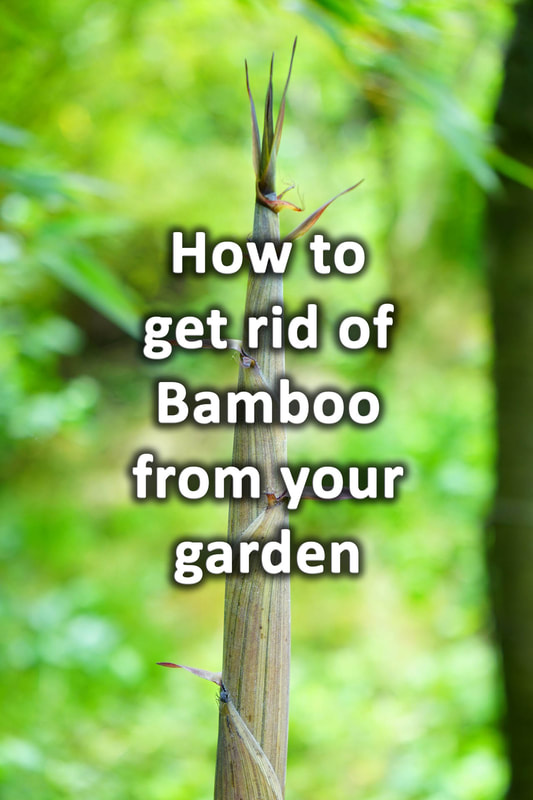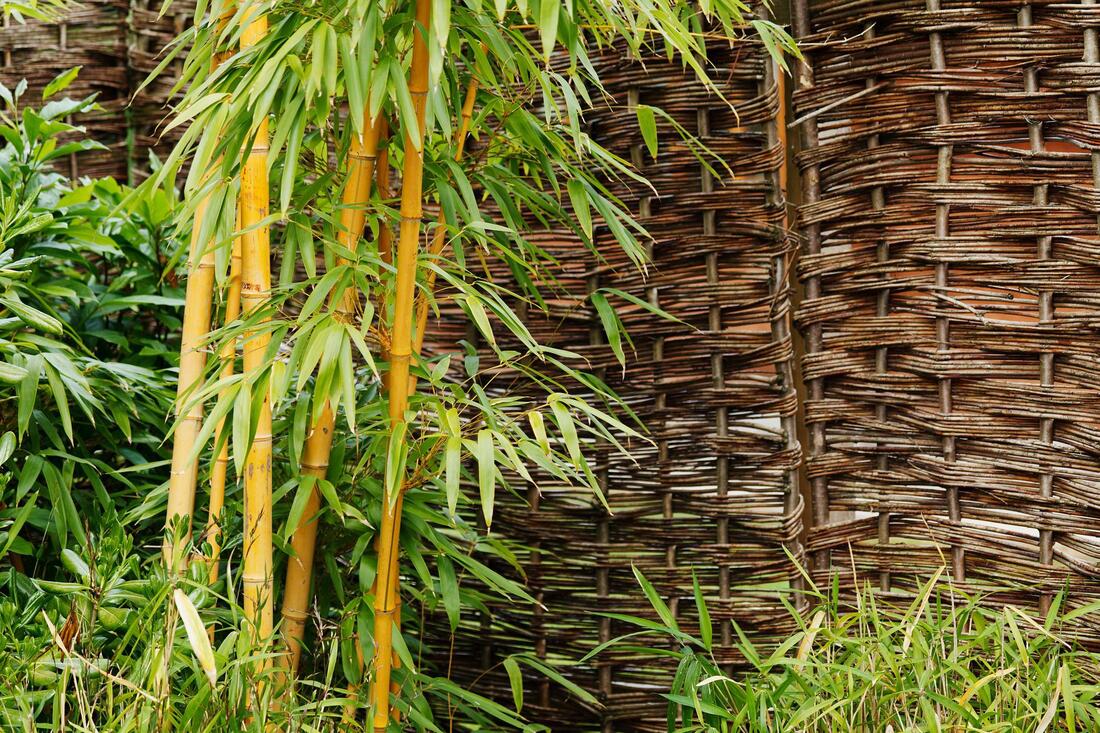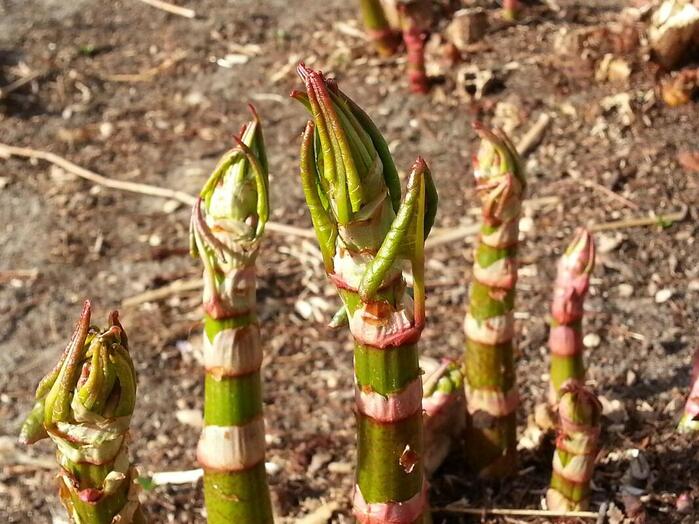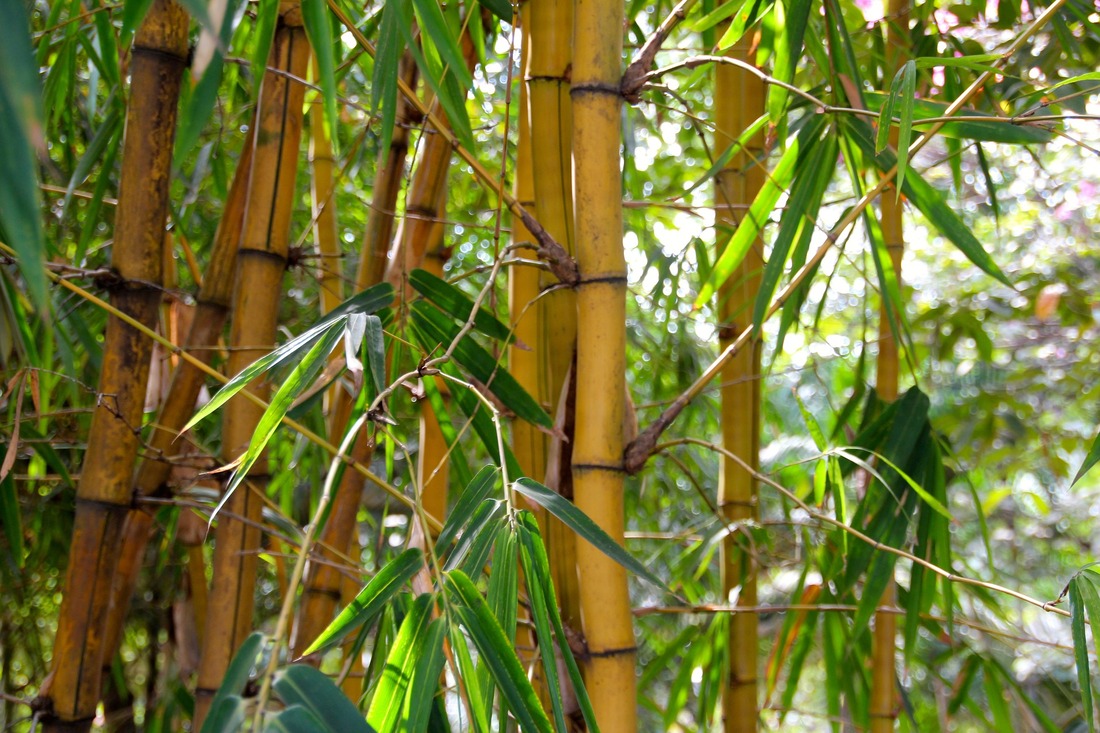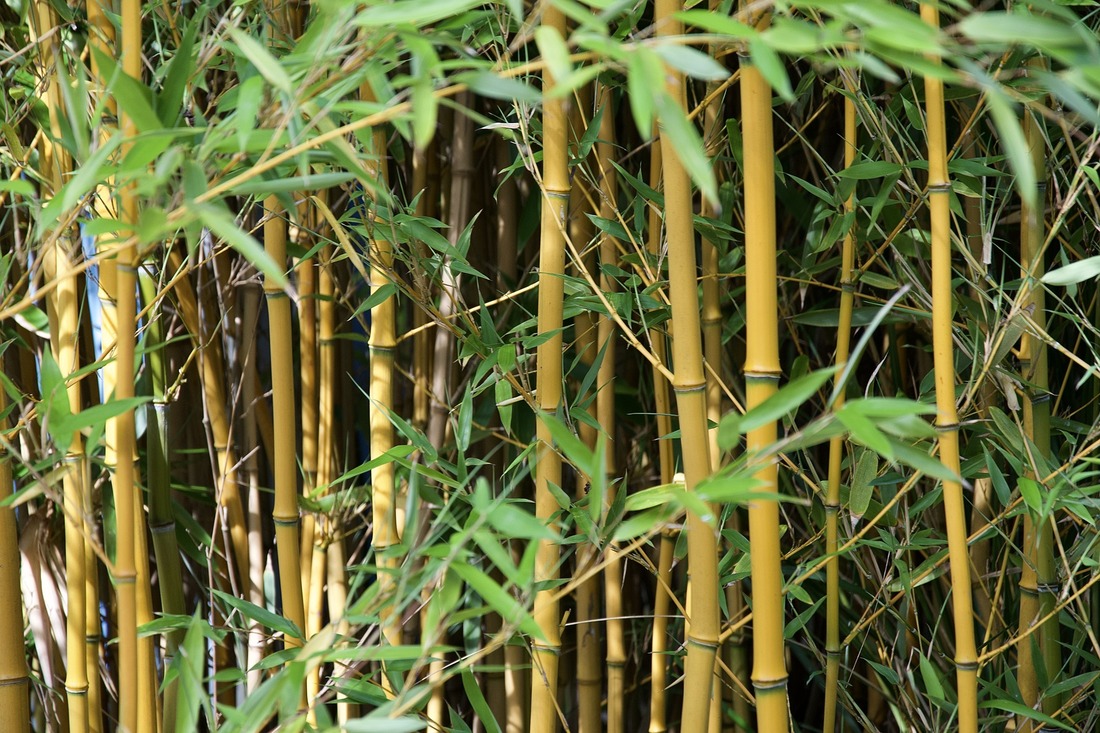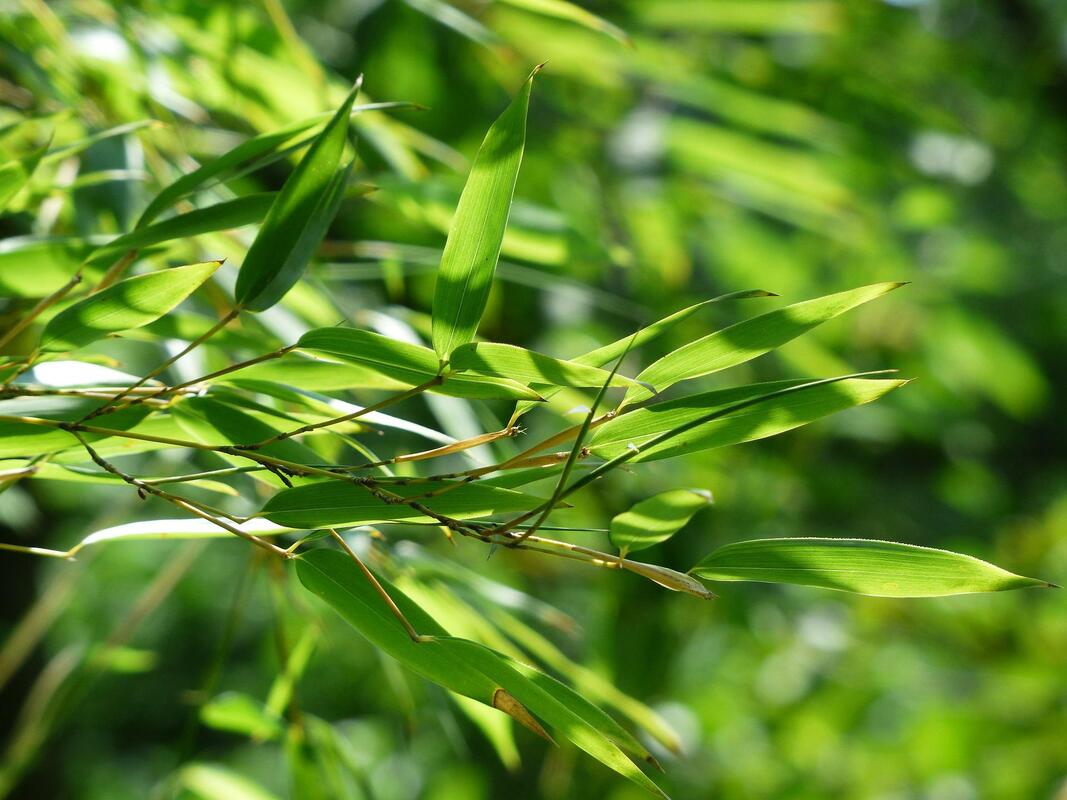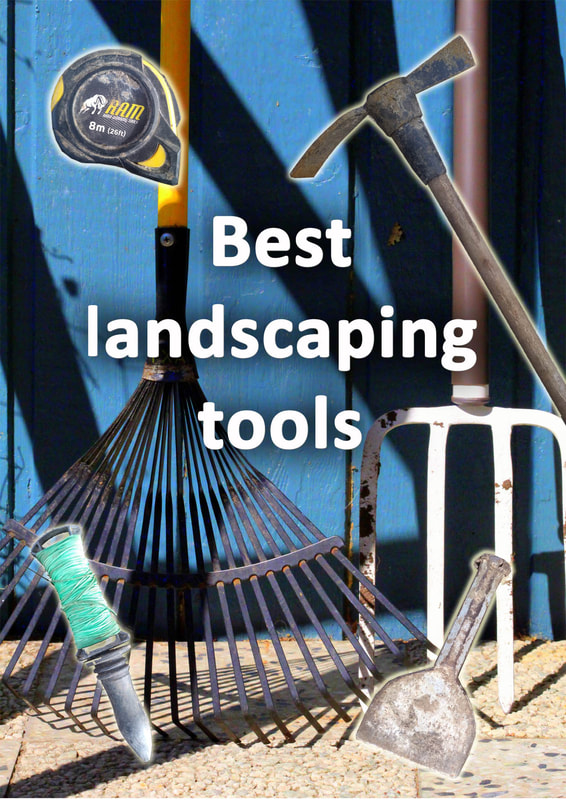|
This article contains affiliate links
Bamboos are one of the most useful plants on the planet! Not only can it create an attractive garden plant it can also provide building materials and even food.
Many species of larger bamboo shoots are edible and appear in many Asian recipes. The canes of large bamboo are so robust they are still used in construction today. There are many different types of these evergreen shrubs utilised as specimen garden plants. Bamboos can provide good height and movement within a well designed planting scheme.
Their tall, narrow, stems and evergreen foliage make bamboo a popular screening plant! However very commonly this can lead to problems.
Very often aggressive species of bamboo are planted which can form dense, impenetrable, clumps. These can be extremely difficult to get rid of as bamboos have very robust root systems. However Bamboo is completely possible to get rid of if you understand how their roots behave. In this garden we will investigate how to get rid of bamboo and its roots from your garden. Bamboo Roots
Bamboos are a member of the grass family and like many grasses, have fibrous roots which lock into the ground. They have a combination of fine, hair like, roots and thick rhizomes or runners. Runners are more typical of running, bamboo species opposed to more clumping varieties. These runners can travel many metres to spring up into a new growing location. This is extremely problematic especially if a bamboo is moving across boundaries.
Such runners can be surprisingly aggressive with some varieties being able to penetrate hard surfacing.
Bamboos roots are fibrous and flexible which make them troublesome to chop away at. This is further exacerbated by their ability dry out the surrounding soil. This makes it almost imposable do dig out around them. Aggressive Bamboo species
As discussed bamboos come in a wide variety of species, growing habits and sizes. Some are more invasive than others with running bamboos generally being the most troublesome. We have identified some of the most aggressive bamboo species found in gardens below. Phyllostachys is probably the most aggressive bamboo species commonly found in gardens. Please bear in mind there is a use for every plant in every situation. The following bamboos species can still be effective in pots or for robust, raised, beds. PhyllostachysPleoblustrisSasaWhen to remove bamboo from your gardenThe best time to remove bamboo from your garden is the spring. During this time of year the soil is still moist from winter conditions and easier to dig. Also, any subsequently shooting rootlets can be removed as they appear in early summer. By removing bamboo at this time of year you will be able to assess the location during the summer. Removing Bamboo by hand
If you are removing bamboo by hand the best strategy is to excavate a trench all the way round plant. If the root clump is particularly impenetrable dig the trench a little further back. You will need to excavate a perimeter trench between 400mm and 600mm. digging to such depts. Can be challenging if you are not used to it, below I have listed some of the best tools for digging such trenches. Digging bar Grafting spade Spade Pickaxe Auger Builders buckets This is to destabilise the root mass and take advantage of mechanical leverage. Do not chop down the canes of the bamboo, these can be used to lever the root ball over. As you excavate your trench you may have to chop through rhizome, runners. Dig back around these and follow them to where they lead. These must also be dug out and removed in full.
As you excavate try to dig soil from under the root mass, this will help to destabilise the plant. If you are having problems digging down any deeper fill the trench with water.
When the water has completely absorbed the ground will be much softer. Penetrate the ground with digging bars and grafting spades to loosen it. Eventually you will be able to rock the bamboo backwards and forwards in its hole. Keep pushing and pulling at the plant until it comes loose. You may have to alternate between digging and pulling until the root mass comes loose. Be careful when moving the plant, the foliage of bamboos can be sometimes be sharp. Wrap up the canes in a sheet or old blanket so you can handle it much more easily. When you have dislodged the bamboo drag it out of the hole and leave it to dry out. This will make it much lighter and easier to dispose of. Removing Bamboo with a mini excavator
With bamboo having such robust root systems it is extremely efficient to dig them out with an excavator. This is great if you have access to one and can get it into your site. However what excavators have in brute force they can lack in precision. Many times careless excavating can smash up root systems and disperse them into the backfill. Hence if you do use an excavator still follow the systematic hand dig method described above. This will enable you to remove the root ball in one piece without dispersing roots. Sieving the soil
After any bamboo excavating project it is always a good idea to sieve the soil afterwards. This will enable you to remove any remaining bamboo roots from the soil. This process is particularly important after disturbing the soil heavily with an excavator. Depletion
If there are still stubborn shoots still emerging from the area there are some methods you can try. Depletion is a method which relies upon draining the rhizomes of their energy over time. This involves cutting the whole plant to the ground and new cane, shoots, as they emerge. Over time with no energy harvested from the sun the bamboo will lose energy and die. However with this method the threat is runners try to travel further away under fences to escape the cutting. This method requires continuous attention and it can take many years to be effective. Smothering
Smothering is where the plant is starved of light and water from the top. This is usually achieved by laying out tough membranes and laying heavy boards down. This will severely weaken a bamboo over time however, again, this will encourage extreme running. In the end it is always best to dig out any bamboo by the roots. Hiring professional help
If you really have a serious problem with bamboo in the end it can be best to seek professional help. Professional contractors have good experience of such issues and will normally find a solution quickly. Useful links
Bamboo control / RHS Gardening
How to Get Rid of Bamboo: 4 Methods for Removing Bamboo - 2023 - MasterClass Bamboo Control: How To Get Rid Of Bamboo (gardeningknowhow.com)
'As an Amazon associate I earn from qualifying purchases'
1 Comment
7/21/2022 03:27:59 am
I agreed when you stated that spring is the best season to remove bamboo from your garden. My mother wants to remove the unnecessary bamboo from her garden. I should advise her to hire an expert in bamboo removal to ensure they won't grow back.
Reply
Leave a Reply. |
The Author
|
Landscaping services across Buckinghamshire, Amersham, Aylesbury & High Wycombe
Hyde Heath, Amersham, Buckinghamshire |
|
